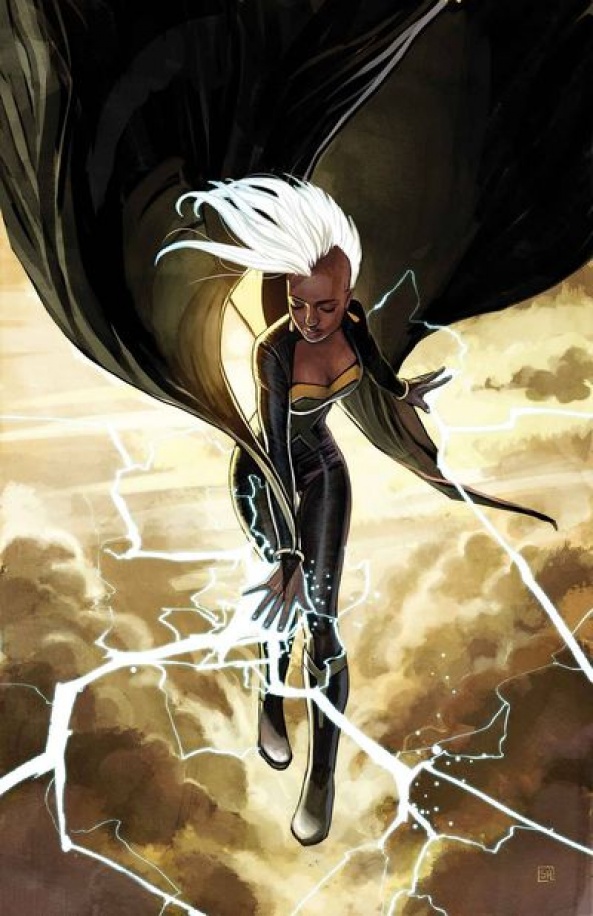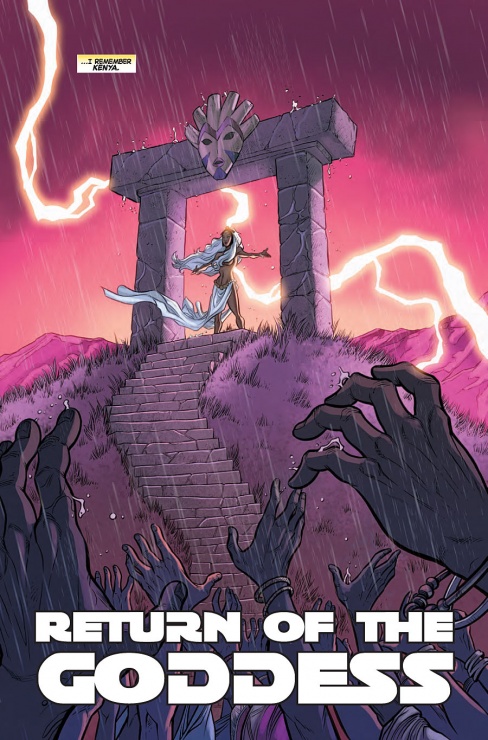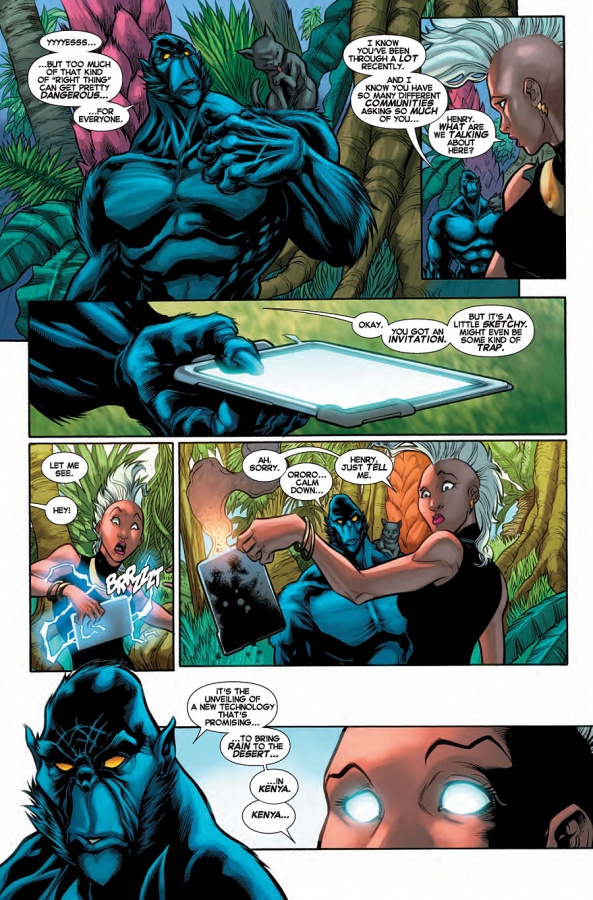“Storm” #3 embraces the pillars of Storm’s past, and does its best to destroy them. Issue #3 will delight old readers of Storm, and awaken new readers to gain faith in the woman who has been through so much objectification and oppression in her past that she is now a woman that controls the sky yet is still terrified of crowds. As readers in this solo-arc we are beginning to understand why Storm fears her own power, as much as why she is skeptical of others around her.
And how else is Pak going to do this better then by calling back one of Storm’s oldest and most complicated love affair that questioned her power? That’s right. Forge is back.

Written by Greg Pak
Art by Scott Hepburn and David BaldeonAfter breaking into the lair of her old foe Callisto in a Manhattan subway, Storm finds her building a community for wayward youth. Left doubting her place in the hero world, Storm wonders who exactly wants and needs her help? Thankfully, Storm doesn’t have to wonder too long as Beast hands her a telegram from a Kenyan village asking for Storm’s help to save them from a killer drought…the very same village that once called her a Goddess.
But in this village that Storm is determined to help save, there awaits an old love that once stole all her powers. He waits for her like the people wait for the rains.
What “Storm” #3 does best is confront the one story-line that most Storm fans argue is a pretty problematic relationship: Storm and Forge. Fans could ask why bring back the one character from Storm’s life that literally stole all her powers from her accidentally and then lied about it as he professed his undying love; what does this bring to Storm’s character? It brings her, as Pak’s writing does well, a chance to speak out against the injustice of her past life. It gives her a moment to show us as readers how this particular character of Storm has learned from that past, and refuses to repeat it in this new life (or arc) of hers.
Forge comes into the story-line with good enough intentions. As Storm deals with a village’s drought, he too wants to help this village have water. He wants to create a machine (remember how handy-dandy he was with his tools?) that could harness Storm’s power and bring rains to the Kenyan plains whenever this or any village needs it to survive. In a moment of supreme clarity, she responds to this request by saying,
“As my powers have grown…I’ve learned about new limits. If I make it rain for a week right here…it might cause a drought a thousand miles away.”
Pak’s dialogue of Storm shows a conscientious hero, not bent on breaking through barriers without thought, but knowing how one act is never really or practically an isolated act in the real world. Storm doesn’t just magically fix things. There is no magical fix, and by giving her that perspective we are allowed to see Storm as a pragmatic, all powerful being, who has chosen (not been forced) to see her powers as a tool that isn’t owned by anyone, or any village.

Further, it does something quite remarkable. By having Storm talk down this machine that could harness her power she argues that the people in the village need to find a means for themselves to help themselves — and by doing that, she takes herself down from being their Goddess. She does not force them to look up to her and therefore not look up to each other; she denies them this old Storm that they used to know, even as Hepburn and Baldeon momentarily snap back into in a panel of lightning revelry as she stands all mighty on a mountain while desperate, callused hands claw at the sky to soak up the rains she pours down into their mouths, and soil, and hopes:

She is becoming a Storm who represents the community, which also means sometimes her best way of helping is by not helping at all. It’s a radical suggestion to make for heroes, and especially for a female hero-led story where most readers are looking for bad-ass change and kicks and power, but it is a special power. It proves that returning mid-run to an origin story in a Kenyan village that used to hail Storm as a God is not just a filler into the past for new friends, but a way to unite the old and new readers of Storm to see how she is not standing on that mountain anymore begging for fans, and followers. She is working in the soil with her friends.
Continued below
Warm with high saturation of colors, it perhaps is too light. Issue #3 loses some of the starkness that Ibanez created for the series as it tends to pay more detail to the scenery than the people inside them. At times, Hepburn and Baldeon’s depiction of Storm, especially in her close-ups seem to illustrate her as a bit younger than the Ibanez version of her that chose an older face with less animate features, and heavily detailed looks and glances with high-shadows and strong depth of shading. At moments of self-discovery and challenging Forge, of all people, they tend to show a less mature Storm than I’d like to see on the page. The less detailed faces (with the exception of Esther Shira, the old tribe leader’s face who looks as aged as I’d hope an old leader of her village to be, and no less feisty) tend to oversimplify moments of internal struggle for Storm.
Rachelle Rosenberg keeps to her high-velocity palette, and contours of shading around Storm’s face so that the setting still falls into our familiar frame of blue hues, warm golden tones, and unabashed colors. As always, Rosenberg paints with her whole brush, leaving each panel full and satisfying. She shines best when Storm is at her worst, and the world is set in indigo and cerulean and lightning abounds around Storm, as those moments of coloring sweep me up into the whirlwind of Storm’s internal struggle. The swirls of sky on the page are enough to throw anyone into the storm that is Storm.
A clever twist of old Storm myth, “Storm” #3 is a tale to read in a sitting and then leaf through old “Uncanny” volumes in the back of your dusty basement (or I guess online account because that is a thing these days).
Final Verdict: 6.8 – Storm is her own line of hero.



